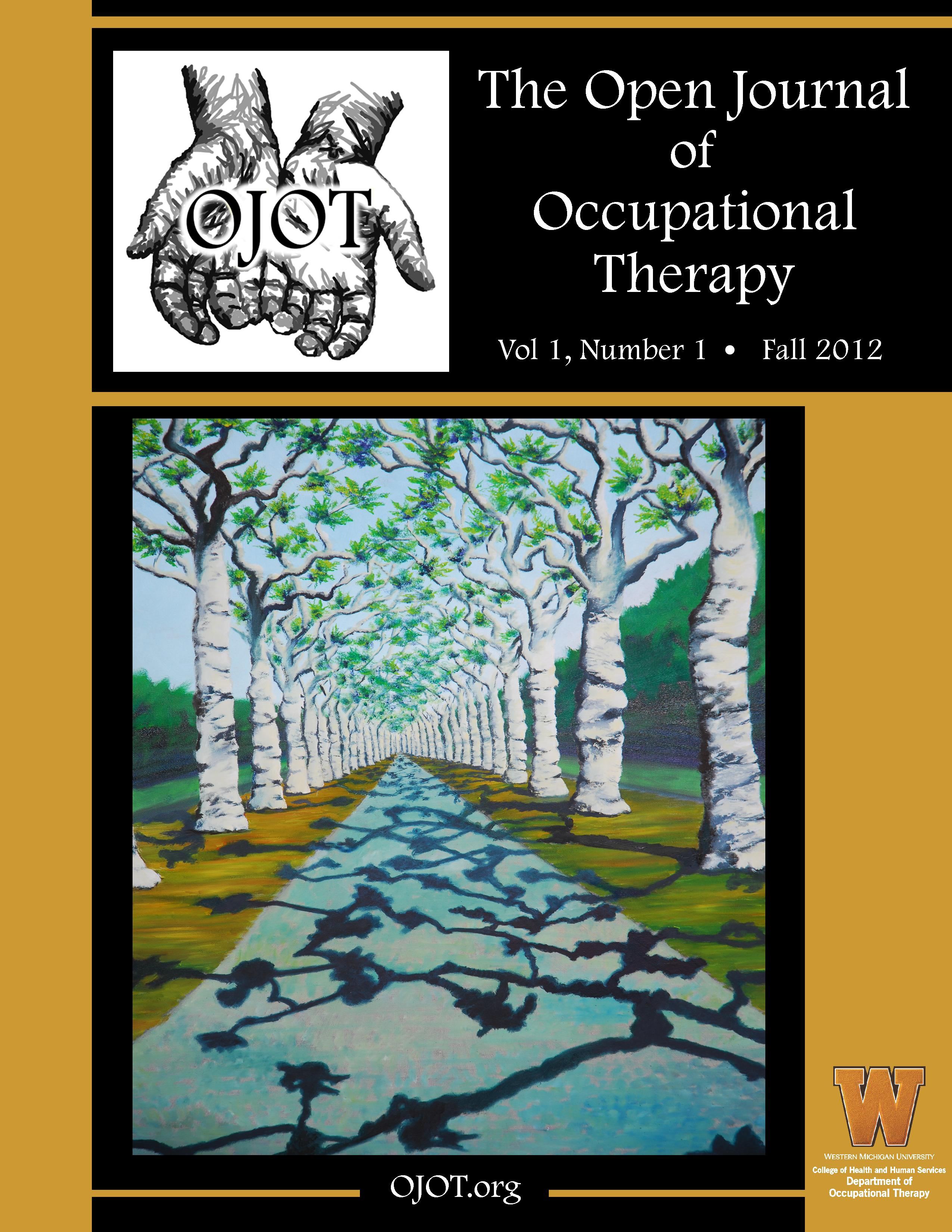ScholarWorks > HHS > OT > OJOT > Vol. 3 > Iss. 2 (2015)
Credentials Display
Anne M. Fenech, DipCOT, MSc (geront), MBA, PhD
Abstract
Background: This article explores whether engagement with listening occupations varies depending on the occupational role or the level of sensory stimulation presented to participants with neuropalliative conditions.
Method: The study used a multiple case quasi-experimental study involving marginal-participant time-sampled observations of engagement of individuals with neuropalliative conditions, with casual leisure occupations using the Individual Child Engagement Record. Data was collected using the Individual Child Engagement Record with 14 participants (who had Barthel scores averaging 7/100). The participants represented a particular sub-group of individuals with profound levels of neurological disability.
Results: The time-sampled observations of engagement showed a significant difference between the scores for the control condition, engagement in a potentially active role at a music-making group, and engagement in a passive audience role when listening to an audio recording. Therefore, passively listening to an audio recording appears to be less engaging than the potentially active role offered by the music-making group for participants with neuropalliative conditions.
Conclusion: The small sample size and the use of a single observer without video recording backup compromised the reliability of the data while complying with the facility’s POVA policy. Switching on an auditory recording or broadcast, while easy to arrange, may not be sufficiently engaging to prevent boredom and occupational deprivation. Consideration of an individual’s sensory, support, and role preference should be undertaken when designing leisure occupations for individuals with neuropalliative conditions rather than simply switching on an audio recording or broadcast.
Recommended Citation
Fenech, A. M. (2015). A Study of Engagement in Active and Passive Roles in Casual Leisure Occupations. The Open Journal of Occupational Therapy, 3(2). https://doi.org/10.15453/2168-6408.1134

